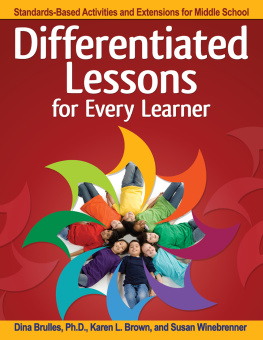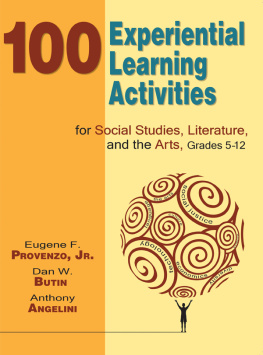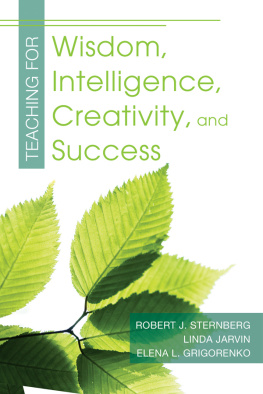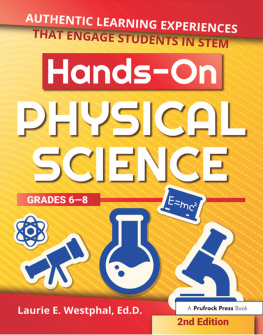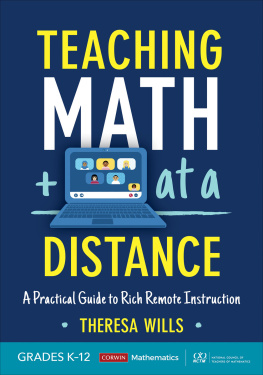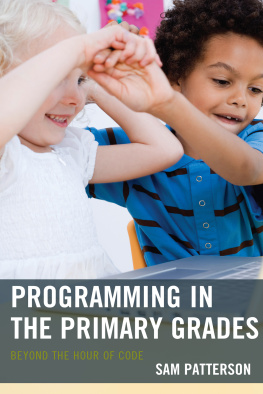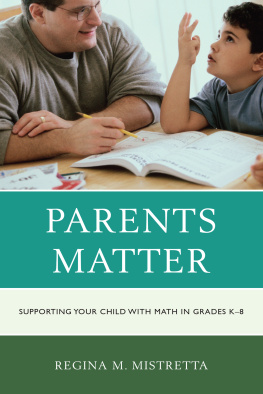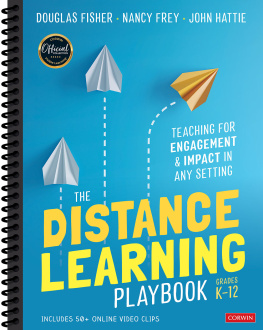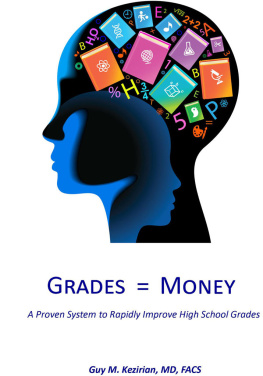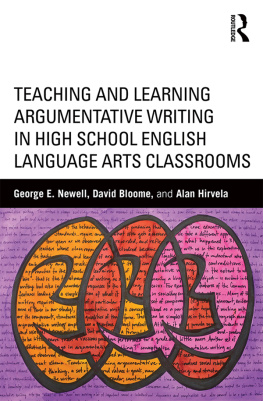Sibberson Franki - Still learning to read: teaching students in grades 3-6
Here you can read online Sibberson Franki - Still learning to read: teaching students in grades 3-6 full text of the book (entire story) in english for free. Download pdf and epub, get meaning, cover and reviews about this ebook. City: Portland;Maine, year: 2016, publisher: Stenhouse Publishers, genre: Art. Description of the work, (preface) as well as reviews are available. Best literature library LitArk.com created for fans of good reading and offers a wide selection of genres:
Romance novel
Science fiction
Adventure
Detective
Science
History
Home and family
Prose
Art
Politics
Computer
Non-fiction
Religion
Business
Children
Humor
Choose a favorite category and find really read worthwhile books. Enjoy immersion in the world of imagination, feel the emotions of the characters or learn something new for yourself, make an fascinating discovery.

- Book:Still learning to read: teaching students in grades 3-6
- Author:
- Publisher:Stenhouse Publishers
- Genre:
- Year:2016
- City:Portland;Maine
- Rating:5 / 5
- Favourites:Add to favourites
- Your mark:
- 100
- 1
- 2
- 3
- 4
- 5
Still learning to read: teaching students in grades 3-6: summary, description and annotation
We offer to read an annotation, description, summary or preface (depends on what the author of the book "Still learning to read: teaching students in grades 3-6" wrote himself). If you haven't found the necessary information about the book — write in the comments, we will try to find it.
Still learning to read: teaching students in grades 3-6 — read online for free the complete book (whole text) full work
Below is the text of the book, divided by pages. System saving the place of the last page read, allows you to conveniently read the book "Still learning to read: teaching students in grades 3-6" online for free, without having to search again every time where you left off. Put a bookmark, and you can go to the page where you finished reading at any time.
Font size:
Interval:
Bookmark:
2nd edition
teaching students in grade 3-6
Franki Sibberson
Karen Szymusiak
Forword by Colby Sharp
Stenhouse Publishers
www.stenhouse.com
Copyright 2016 by Franki Sibberson and Karen Szymusiak
All rights reserved. This e-book is intended for individual use only. You can print a copy for your own personal use and you can access this e-book on multiple personal devices (i.e. computer, e-reader, smartphone). You may not reproduce digital copies to share with others, post a digital copy on a server or a website, make photocopies for others, or transmit in any form by any other means, electronic or mechanical, without permission from the publisher.
Every effort has been made to contact copyright holders and students for permission to reproduce borrowed material. We regret any oversights that may have occurred and will be pleased to rectify them in subsequent reprints of the work.
Credits
: From Mick Harte Was Here by Barbara Park, copyright 1995 by Barbara Park. Used by permission of Alfred A. Knopf, an imprint of Random House Childrens Books, a division of Random House, Inc.
Page 183 and : From Once Upon a Fairy Tale: Four Favorite Stories Retold by the Stars, copyright 2001, reprinted with permission of The Starbright Foundation.
: Text copyright 2001 by Rebecca Kai Dotlick from When Riddles Come Rumbling by Rebecca Kai Dotlich. Published by Wordsong, Boyds Mills Press, Inc. Reprinted by permission.
Library of Congress Cataloging-in-Publication Data
Names: Sibberson, Franki. | Szymusiak, Karen.
Title: Still learning to read : teaching students in grades 36 / Franki Sibberson and Karen Szymusiak.
Description: Second edition. | Portland, Maine : Stenhouse Publishers, 2016. | Includes bibliographical references and index.
Identifiers: LCCN 2016008289 (print) | LCCN 2016009111 (ebook) | ISBN 9781625310262 (pbk. : alk. paper) | ISBN 9781625311252 (ebook) Subjects: LCSH: Reading (Elementary)
Classification: LCC LB1573 .S5475 2016 (print) | LCC LB1573 (ebook) | DDC 372.4dc23
LC record available at http://lccn.loc.gov/2016008289
Cover design, interior design, and typesetting by Martha Drury

Manufactured in the United States of America
22 21 20 19 18 17 16 9 8 7 6 5 4 3 2 1
Thank you for purchasing this Stenhouse e-book; we appreciate the opportunity to help you become an even more effective teacher. This e-book is for your own individual use: you may print one copy for your own personal use and you can access your e-book on multiple personal devices, including computers, e-readers, and smartphones. However, you cannot make print or digital copies to share with others, nor may you post this e-book on any server, website, or other digital or online system. If you would like permission to distribute or post sections of this e-book, please contact Stenhouse at permissions@stenhouse.com.
If you would like to see a full list of the e-books Stenhouse offers, please visit us at www.stenhouse/allebooks
W hen I decided to become a teacher, I had this vision in my head of what my fourth- or fifth-grade classroom would look like. I envisioned a room filled with kids reading amazing books. Kids would be sprawled about reading novel after novel, engaging in rich and powerful discussions. Each day I would read aloud from a book like Hatchet or Tales of a Fourth Grade Nothing. Kids would hang on my every word, and they would race off to grab the next book in the series.
Receiving my student teaching placement was shocking. When I opened the envelope and read the words first grade, I wept. Teaching tiny people how to read, write, and think sounded terrifying. And yet, my student teaching adventure turned out to be amazing. I quickly fell in love with those little buggers, and I learned so much about teaching reading that semester in Mrs. Warrens first-grade classroom.
Following my student teaching, I was hired in the same building as a long-term sub in a third-grade classroom. My excitement to teach kids who already knew how to read was hard to contain. I figured that by third grade, all of the kids would have figured out the things that the first graders in my student teaching struggled with. Wed be able to spend our time having wonderful literary conversations around the novels my students would surely be reading.
Things didnt work out quite the way I expected. My students did not have the skills as readers that I anticipated, and I spent most of the year trying to survive and not mess them up too much. What I needed more than anything my first year in a classroom was the book Still Learning to Read. Still Learning to Read would have given me permission to slow down the first six weeks of school to get to know my readers. I would have had a resource to help me design my classroom in a way in which my readers would have everything they needed, and I would have been able to think about my schedule in a way that would have allowed my students extended reading time while I worked with small groups and one-on-one. Still Learning to Read would have helped me think about how I group my students, and it would have helped me read aloud to them more effectively.
Unfortunately, I didnt read Still Learning to Read until my seventh year of teaching. By then I was friends with Franki, and I had already learned so much from her by reading her blog, interacting with her on social media, and watching her speak at conferences. The entire time I was reading Still Learning to Read I thought about those kids that first year, and how much more they would have gotten from their year with me if I had read Still Learning to Read when I was their teacher.
I am so excited that, thirteen years after Still Learning to Read was published, Franki and Karen are releasing an updated version. Reading this new and improved book had the same effect on me that reading the original version did: I found myself eager to go to school the next day to try out some of the ideas. If you walked into my classroom today, youd see one of my students reading Eddie Pittmans Red Planet, a brand-new graphic novel that half my class is dying to read, with a bookmark inside it containing a list of the names of students who want to read the book next.
Rereading Franki and Karens book not only makes me want to rush into my classroom to try something new right away, it also helps me to think deeply about my classroom design. This isnt something that I will be able to change tomorrow, but it is something that Ill be looking long and hard at during the summer months. Still Learning to Read has me totally rethinking how I organize the nonfiction portion of my classroom library.
The new edition of Still Learning to Read holds true to the values we found in the first edition: choice and authenticity are still the foundation that this book stands on. The new edition includes new book lists and new digital pieces sprinkled throughout. If you read the first edition, youll notice other additions as you read this version. Franki and Karen have created a book that all elementary teachers need to have access to. I know that this will be a book that I continue to look to for guidance as I teach the readers in my classroom.
Ive always depended on the conversations of others to bring my own thinking to light.
Dorothy Watson
C onversations have been the foundation of our own thinking and writing. The talk that surrounds our teaching and learning clarifies, strengthens, and extends our commitment to help our students become thoughtful readers. The conversations we have with children give us insight into the process of learning to read and connect us to our own reading experiences. Within our learning communities, conversations count.
Font size:
Interval:
Bookmark:
Similar books «Still learning to read: teaching students in grades 3-6»
Look at similar books to Still learning to read: teaching students in grades 3-6. We have selected literature similar in name and meaning in the hope of providing readers with more options to find new, interesting, not yet read works.
Discussion, reviews of the book Still learning to read: teaching students in grades 3-6 and just readers' own opinions. Leave your comments, write what you think about the work, its meaning or the main characters. Specify what exactly you liked and what you didn't like, and why you think so.

